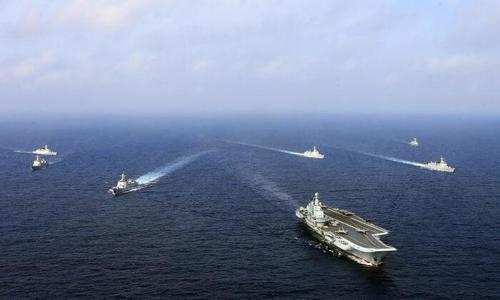War Games Showed US Would "Lose Fast" Against China If It Invaded Taiwan: US General
Authored by Frank Fang via The Epoch Times,
A Chinese invasion of Taiwan would be devastating to the U.S. military as a result of Beijing’s aggressive military development in recent years, according to a U.S. Air Force general.
The outcome was based on a classified Pentagon war game simulation carried out over the years, Air Force Lt. Gen. S. Clinton Hinote said in a recent interview with Yahoo News. He said that U.S. forces were losing more quickly in recent simulations after taking into consideration the Chinese regime’s new military capabilities.
“After the 2018 war game, I distinctly remember one of our gurus of wargaming standing in front of the Air Force secretary and chief of staff, and telling them that we should never play this war game scenario [of a Chinese attack on Taiwan] again, because we know what is going to happen,” Hinote said.
“The definitive answer if the U.S. military doesn’t change course is that we’re going to lose fast. In that case, an American president would likely be presented with almost a fait accompli.”
"At that point the trend in our war games was not just that we were losing, but we were losing faster."
Around September 2020, the U.S. Air Force gamed out a conflict set more than a decade in the future, which started with a Chinese biological-weapon attack on U.S. ships and bases in the Indo-Pacific region, according to the outlet. Using military drills as a cover, Beijing then deploys an invasion force to attack Taiwan, while targeting U.S. bases and ships in the region with missile strikes, the outlet said.
Last fall, the U.S. Air Force simulated a conflict set more than a decade in the future that began with a Chinese biological-weapon attack that swept through U.S. bases and warships in the Indo-Pacific region. Then a major Chinese military exercise was used as cover for the deployment of a massive invasion force. The simulation culminated with Chinese missile strikes raining down on U.S. bases and warships in the region, and a lightning air and amphibious assault on the island of Taiwan.
This is the first time that the outcome of that simulation has been made public.
Since President Joe Biden took office on Jan. 20, the Chinese Communist Party has escalated its war-mongering toward Taiwan, a democratic self-ruled island that Beijing claims as a part of its territory. In late January, a Chinese military official threatened war against the island.
Beijing also has sent military planes into Taiwan’s air defense identification zone (ADIZ) on a nearly daily basis since the start of this year. Most recently on March 10, a Chinese anti-submarine warfare aircraft entered southwestern Taiwan’s ADIZ, according to Taiwan’s Ministry of National Defense.
Earlier this week, Adm. Philip Davidson, the head of U.S. Indo-Pacific Command, warned during a Senate hearing that the Chinese regime could invade Taiwan in the “next six years.”
When asked by a senator about the United States’ ability to defend Taiwan, Davidson said, “I think our conventional deterrent is actually eroding in the region,” citing the Chinese military’s “vast advances” in size over the past decade, and also in capability.
The People’s Liberation Army (PLA) Navy is now larger than the U.S. Navy. By 2025, the PLA is projected to have three aircraft carriers in the Western Pacific to the United States’ one, 12 amphibious assault ships to the United States’ four, and 108 modern multi-warfare combatant ships to the United States’ 12, according to estimates by U.S. Indo-Pacific Command submitted to Congress.
Hinote told Yahoo News that certain adjustments are needed to tilt a possible war with China in favor of the United States. They include moving away from relying on large military bases, ports, and aircraft carriers while fighting the Chinese military, as well as deploying dispersed and mobile forces with large numbers of long-range, mobile strike systems, anti-ship cruise missile batteries, mobile rocket artillery systems, and unmanned mini-submarines, according to Hinote.
What’s more, the adjustments call for greater use of surveillance and reconnaissance sources to allow U.S. policymakers to make quicker decisions.
“If we can design a force that creates that level of uncertainty and causes Chinese leaders to question whether they can accomplish their goals militarily, I think that’s what deterrence looks like in the future,” Hinote said.
Air Force officials didn’t immediately respond to a request by The Epoch Times for comment.




Geen opmerkingen:
Een reactie posten